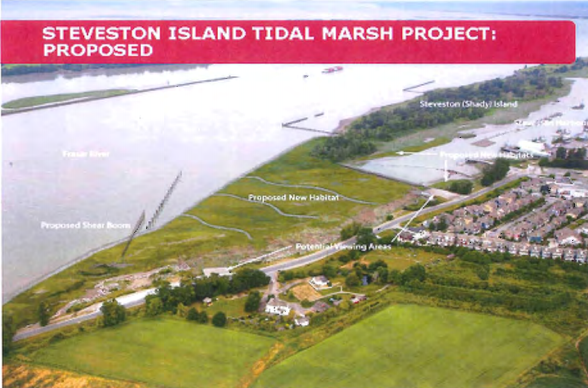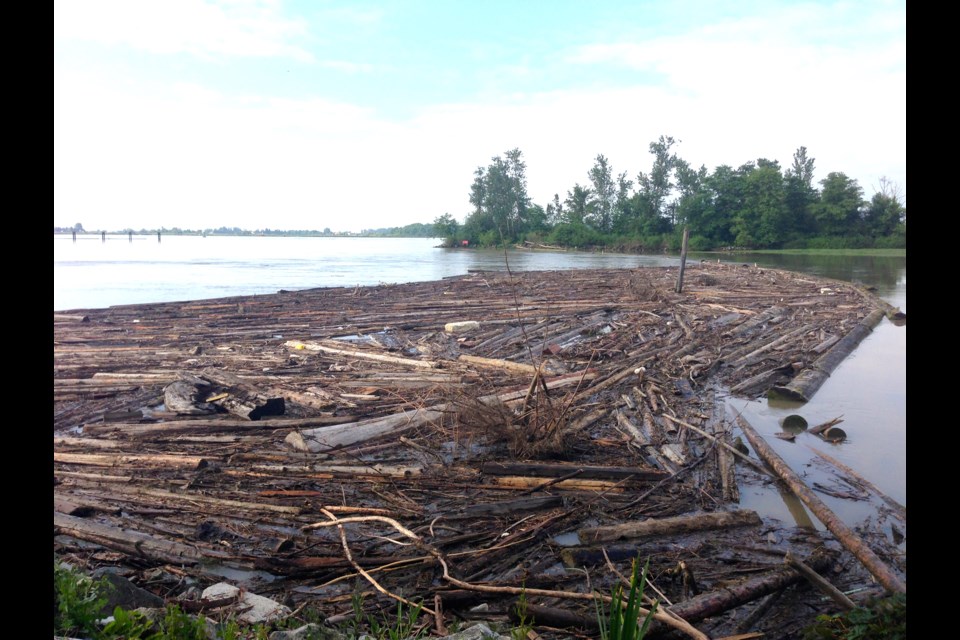Runaway logs are threatening the No. 2 Road pier, as well as boats and infrastructure in Steveston Channel, thanks to an abandoned and deteriorated debris boom in the south arm of the Fraser River.
The City of Richmond is now calling on the federal and provincial governments to repair the boom, which deflects debris from flowing into the eastern opening of the channel.
However, aside from untangling the debris, it would appear untangling bureaucratic red tape is also required.
A parks department report to council last week noted “it’s only a matter of time before a large deadhead log will again cause significant damage to one of the city’s floats, piers, piled buildings or docks.”
Steveston Harbour Authority manager Bob Baziuk said he’s seen trees the size of small submarines floating in the river and also called the situation a danger to boaters.
“It’s a big deal. The Fraser is merciless when the runoff accumulates and makes its way down here. It has made me cringe,” said Baziuk.
There are two debris booms in the area. The main boom is essentially not functioning, according to the report, while the second boom, farther downstream near the pier is now overflowing with debris.
The debris has also posed problems for recreational boaters, such as canoeists and kayakers, according to Tony Dales of Kaymaran Adventures.
The deteriorated main boom is a result of “confusion” as to which party is actually responsible for its upkeep, said Baziuk.
The report states that while the boom was built by Public Works Canada and previously managed by the Canadian Coast Guard it now falls under the auspices of B.C.’s Forest, Lands and Natural resources Operations and Transport Canada.
The latter two government entities have granted the city permission to fix the boom, but the city is calling on Richmond’s federal and provincial politicians to help pay the $150,000 required to do so.
Another problem is that the city identified the need to replace the existing pilings, which requires consent from the Department of Fisheries and Oceans as it impacts the river’s bed (fish habitat).
“As these pilings are located on Crown land, staff are suggesting that these works are the responsibility of the Province of B.C. and Transport Canada,” the report concludes.
Meanwhile, the secondary boom also requires maintenance. The report states maintenance requests for this boom are directed to the harbour authority, however Baziuk said he has had nothing pass by his desk.
Complicating matters for any repair is a preliminary study by Port Metro Vancouver to create a marsh habitat as part of its trade off for developing land along the river (the port’s controversial Habitat Compensation Plan).

The port would use dredged sand to build up the mudflat along the existing boom.
Baziuk said any such plan would still likely require an opening to allow water to pass though, meaning a new debris boom would still be required.
The port’s concept image shows a proposed boom at the outer edge of the habitat area.
Baziuk said the project is in an initial studies phase, which includes looking at how sediment would flow through the channel.
So, whether the city gets a new boom would likely also depend on consulting with the port, as well.



